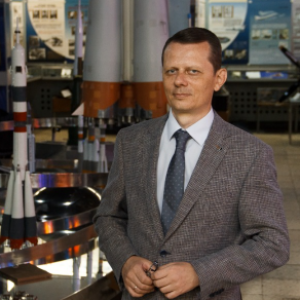Researchers from Samara University have proposed to control chaos for needs of cosmonautics and astrodynamics. In their opinion, this development will help orient spacecraft in space. Results of the study are published in the journal Nonlinear Dynamics.
Traditional scientific methods can predict the behavior of complex dynamical systems only for a short period of time, and it is unpredictable for a long period of time. For example, the weather cannot be predicted in detail for longer than 14 days. Scientists call this property of systems the word “chaos”.
The discoverer of the phenomenon of dynamic chaos was the American meteorologist Edward Lorenz. He revealed the main property of the behavior of chaotic systems and showed that they are generated by so-called “strange chaotic attractors” (from the English “to attract”). It is about subsets of the phase space, which all trajectories starting not too far from them tend to over time.
According to Anton Doroshin, Head of Samara University’s Department of Theoretical Mechanics, this means that systems of different nature (for example, convection of atmospheric flows, nonlinear oscillations in various electrical and mechanical devices, and even human heart rate) can demonstrate complex oscillatory processes, in which the law of these oscillations constantly changes, remaining within certain limits.
“Such oscillations are never repeated, and their graphs are interpreted by the human eye as some kind of random signals with constantly changing amplitude and frequency. All this is due to the fact that these oscillations are unstable, continuously “running away from the same neighboring mode”. Meanwhile, they remain in the limited area of space, where they are attracted by the strange attractor, which in itself is a complex geometric object with a fractional dimension – a fractal”, he said.
The impact of chaos on dynamic systems is traditionally considered harmful, so many scientists target their research at detecting, preventing and eliminating chaos. However, there are studies that consider chaos as a positive aspect.
“The authors of some papers have proposed chaotic schemes for the flight of a spacecraft from the Earth to the Moon orbit with less fuel consumption compared to conventional pulse flights of Homan. They worked out chaotic options for correcting incorrect flight trajectories due to errors at the launch stage of spacecrafts, as well as demonstrated examples of saving space missions by going into chaos (for example, the Japanese Hiten spacecraft for exploring the Moon or the American HGS-1 communications satellite)”, stated Nikolay Elisov, Senior Researcher at Samara University, the co-author of the research.
Using the algorithm of differential evolution, researchers from Samara University calculated the optimal process of chaotic re-orientation of the spacecraft in space, so that its desired angular position was achieved with simultaneous reduction of its rotation speed.
“We synthesized the spatial re-orientation of the spacecraft by creating dynamic chaos in its angular motion. For initiating chaos, we used both well-known strange chaotic attractors and new ones that we found, every of which can capture the spacecraft motion into dynamic chaos. Using the optimization algorithm, we were able to determine the time of escaping the chaotic mode towards the given orientation in space, with a minimum residual angular speed”, resumed Doroshin.
The authors of the research plan to continue studying fundamental properties of deterministic chaos and its positive applied aspects, including application of chaotic modes to solving problems of space flight mechanics and astrodynamics.
The research was supported by the RSF grant.
Source: ria.ru
 RU
RU  EN
EN  CN
CN  ES
ES 